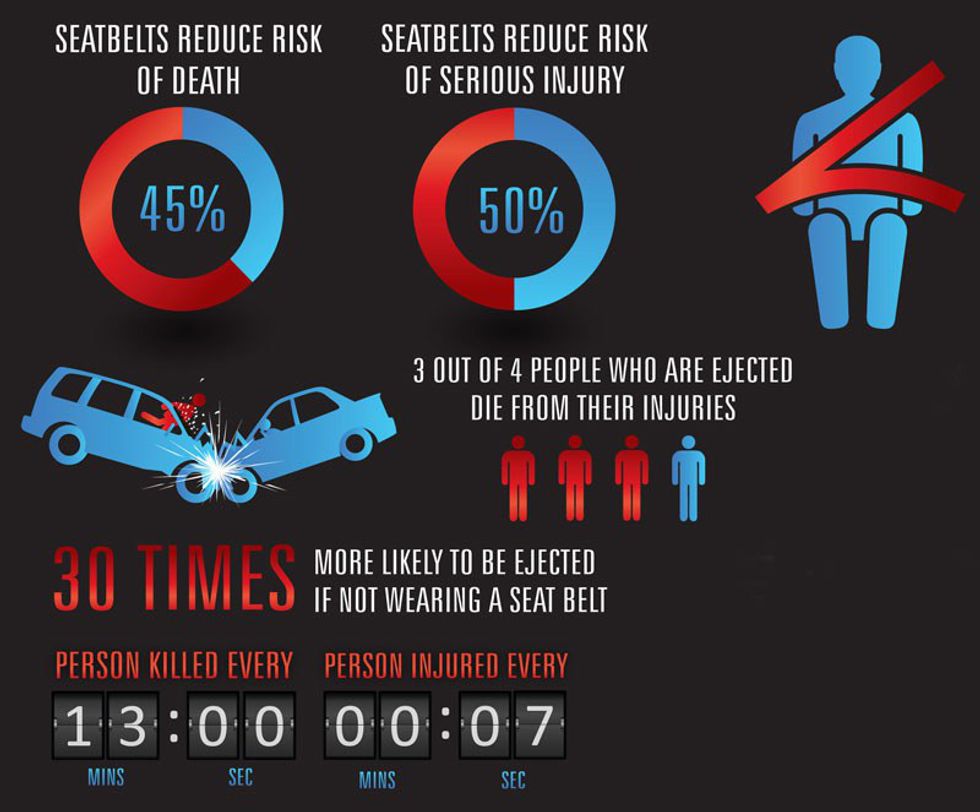Seatbelts save lives.
No, I’m not just quoting off something that’s commonly said. I’m stating a fact that’s been proven by decades of research and experience. According to the National Highway Traffic and Safety Administration (NHTSA), over 13,000 lives are saved by people wearing seatbelts in the United States yearly. Also according to their records, approximately 7,000 lives yearly could have been saved if people were wearing their seatbelts.
So why are seatbelts so important? How is it that a small piece of fabric could be the difference between life and death in a vehicle accident?
The technology behind this simple piece of car safety is astounding. Mainly, the whole point of having a seatbelt is to protect against inertia. Imagine that you’re in a car going 50 miles an hour down a straight road. Inertia is an object’s tendency to keep going in a straight line at a certain speed until something works against it. If you were to take your foot off of the accelerator pedal, eventually the friction between the road and your car’s tires would slow you down to a halt, but that would take a while before you would actually stop. But until you were to take your foot off of the accelerator pedal, you would keep going at 50 miles an hour.
Now imagine that all of a sudden your car slams into something that brings it to a complete stop in a short amount of time. The car’s inertia is suddenly decreased because of whatever it is the car hit. Your inertia from being inside the car, however, isn’t affected by that hit. If you didn’t have anything to stop you, your inertia would allow you to continue forward at that 50 miles an hour, likely causing you to fly through the front windshield and out of the car.
That’s where seat belts come in. Inside the car at the base of your seat is a mechanism called the retractor mechanism. When you pull your seatbelt out, the mechanism spins counterclockwise, spooling out your seatbelt to however long you need it. The spiraled spring in this mechanism, however, wants to remain in its natural coiled state. When you release your seatbelt from the lock, it will naturally want to spin clockwise and retract the belt back to its original state.
The cool part comes when you have an abrupt stop. Also included in this retractor mechanism is a locking mechanism, which is triggered either by the car’s movement or the belt’s movement. The main component of the first mechanism is the weighted pendulum, which is attached to what’s called a pawl (basically a sturdy small rectangular piece of metal). When a sudden stop occurs, the pendulum on the bottom swings forwards, moving the pawl into a position where it will catch the spools of the spiraled spring and cause it to lock in place. The gear can’t move forward, and neither can the belt, so the seatbelt length doesn’t change and you can’t move forward from your position.
When seat belts were first invented in the early 19th century by George Cayley, they weren’t even intended for cars, since at that point motorized vehicles weren’t even a thing. They were supposed to be used to secure a person to a moving object and were often used by firemen and painters when they needed to reach higher places. Today, however, they have become extremely important (and therefore required) in all cars, and are not only legally required to be worn but are also great ideas when it comes to vehicle safety. All 50 states have some type of seatbelt law, with punishments for not wearing one ranging from minimal to quite severe. Everyone who’s ever been in an accident probably knows that seatbelts are life-savers.
Literally.





















